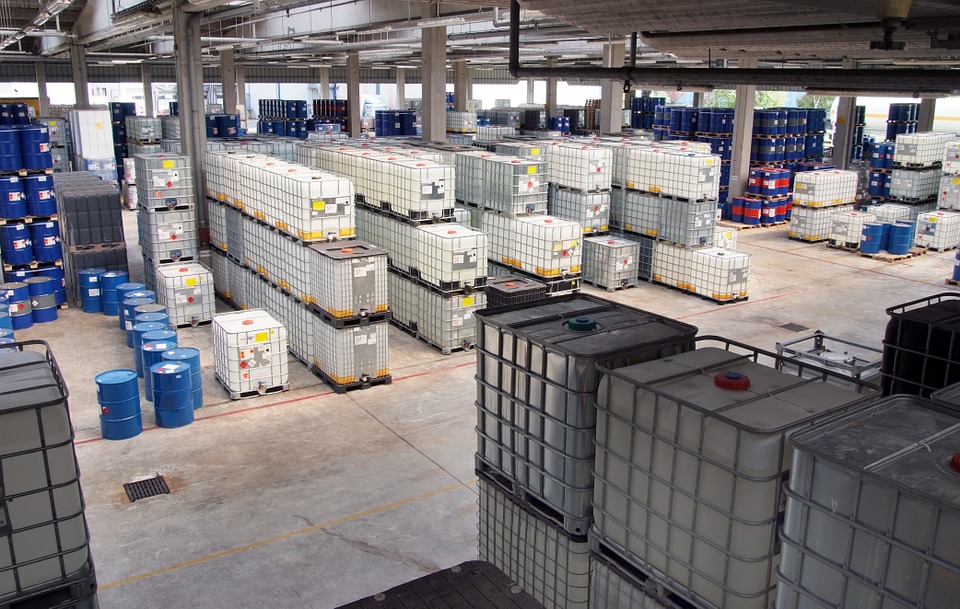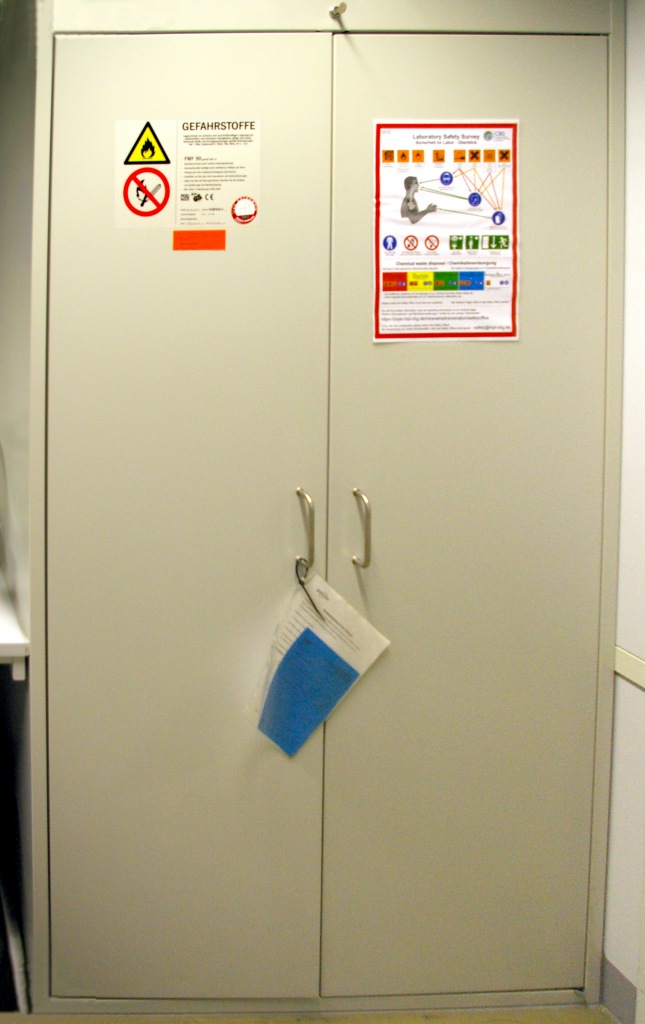Storage
What is chemical storage?
Safe chemical storage requires companies to understand the hazardous properties of substances—especially those that contribute to fire, explosion, or toxic reactions. Safety Data Sheets (SDS) provide essential information needed to ensure proper and safe chemical storage.
A chemical storage concept should offer an overview of all relevant aspects, including:
- Requirements for storage areas and their maintenance,
- Fire protection measures,
- Labelling of chemical substances and storage locations,
- Chemical segregation by compatibility groups,
- Specific storage requirements for individual substances,
- Availability and accessibility of up-to-date chemical information,
- SDSs and documentation,
- A complete chemical inventory,
- Training for workers handling and storing chemicals.
Additionally, the internal transport of chemicals—especially in large quantities—also poses safety concerns, particularly during movement to and from storage areas.

Potential Risks in Storage
Risks primarily arise when hazardous substances are released due to:
- Leaks from old or damaged containers,
- Oxidation or deterioration of packaging,
- Accidents during handling (e.g., refilling or relocating containers),
- Fires in storage areas, which may significantly increase exposure to chemical hazards.
These risks can be effectively mitigated by adhering to chemical storage regulations and maintaining storage areas in good condition.
Large-Scale Storage Considerations
Larger quantities of chemicals may trigger additional legal and safety requirements. These include:
- Emergency preparedness plans,
- Notification and coordination with local authorities and emergency services,
- Communication protocols with the public in accordance with the Seveso III Directive.
Taking proactive measures can prevent major accidents and protect human lives and property.
Labelling, SDS, and Documentation
All chemicals must be labelled in accordance with the EU CLP Regulation (EC No. 1272/2008), which aligns with the Globally Harmonized System (GHS). In addition to the CLP labels indicating hazards (examples) there is a labelling system indicating transportation requirements (examples). Classification and labelling of hazardous substances for transportation is also a part of GHS and it is laid out in the UN Recommendation on the Transport of Dangerous Goods.
Further, REACH Article 31 and Annex II specify that Section 7 of the SDS must contain storage and handling instructions, including:
- Storage conditions and equipment,
- Risk management measures related to fire, explosion, corrosion, and accidental release,
- Weather-related precautions,
- Safety features of storage rooms.
All of this information must be consistent with the substance’s physical and chemical properties, as listed in Section 9 of the SDS. SDSs should be readily available and accessible near the storage location.
General Storage Requirements
- All chemicals must be clearly labelled, and a chemical segregation plan should be in place.
- Maintain an up-to-date chemical inventory and track expiry dates to ensure timely disposal or replacement.
- Segregate incompatible chemicals to avoid dangerous reactions such as explosions, fires, or the release of toxic gases. Refer to relevant guidance documents (e.g., Segregation of Chemicals) for more details.
- If the amount of stored hazardous chemicals exceed certain thresholds, additional requirements regarding emergency plans, communication with authorities and the general public etc. need to be followed according to the Seveso Directive. Taking precautions can prevent serious disasters and therefore, loss of human life. Learn more how to be prepared if such an event occurs.
In Conclusion
Implementing proper chemical storage practices is crucial to:
- Protect human health and the environment,
- Prevent accidents and property damage,
- Ensure compliance with legal requirements,
- Streamline inventory control and reduce chemical management costs.
Whenever possible, consider substituting hazardous substances with less dangerous alternatives to further reduce risks and simplify storage needs.
This text provides a general overview and is not an official regulatory document. For company implementation, always refer to national legislation and official guidelines.
Additional Resources:
- More information on chemical storage in warehouses
- EU-OSHA (European agency for safety and health at work) chemical storage guidelines